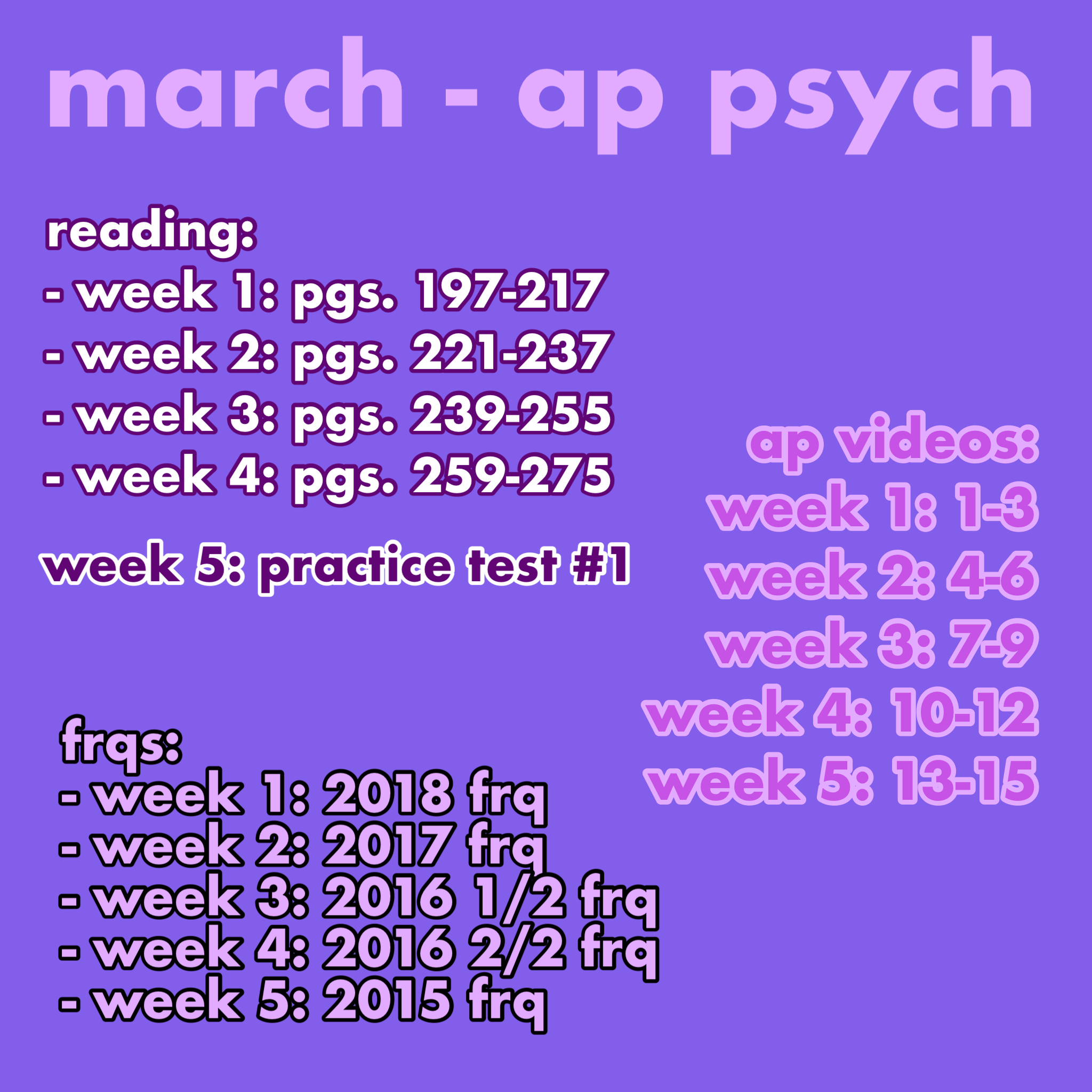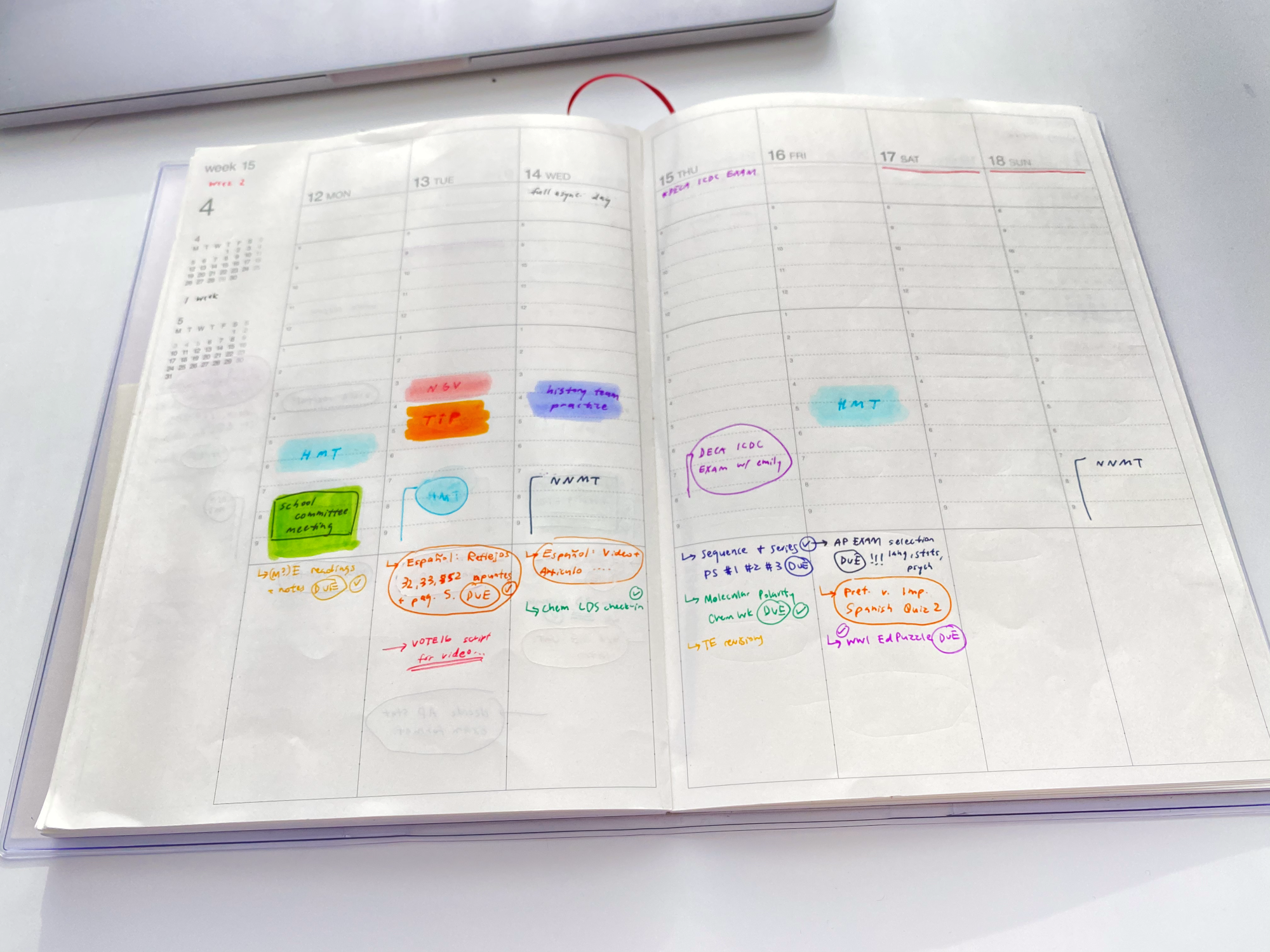Five ways to boost your productivity
As I suspect for most of us, I’ve always tried to “be productive.” I’ve experimented with lots of tips I’ve read online or come up with on my own– Many of which haven’t worked. To name a few, waking up at 5am to exercise, staying up until 11pm studying, planning meals with detail on my phone, or spending hours decorating a weekly layout in a bullet journal.
Now, social media also offers us a shiny version of productivity: Highlighter color-coded notes, picture-perfect rooms, lots of water, smoothie breakfasts, consistent workouts, pretty outfits– all packaged and pitched to us as the epitome of productivity.
Of course, this isn’t a dis to those who are able to subscribe to 5am wake-up times or organize everything to acute and aesthetic detail. It’s just not all of us can (or want) to follow the demands of this lifestyle, but we still want to be productive.
And if my experimenting has shown me anything, it’s that productivity is more than a trendy visualization. Productivity really only requires getting your work done and feeling good about it.
So, instead of a niche subscription to a specific “type” of productivity, here are five ways that you can boost your productivity:
Make the best of mornings.
No, unfortunately (or perhaps, fortunately) I am not referring to the glorified “productive morning routine” pitched to us by millennials and YouTubers.
…Or at least not necessarily. First comes the acknowledgement that not everyone is a morning person– But to make the best of your mornings, you don’t need to be.
Mornings, much like first impressions, are important: they set the tone of the day. Just accomplishing one task can set you on the right track. When you feel that your morning has been productive, you’re motivated to keep it up for the rest of the day.
This also allows you to customize your morning. You don’t need to wake up too early, but, of course, you can. The whole point is you should do what you want with your mornings, whether it be following the “Billionaire Morning Routine” or not adhering to a strict routine at all—all you need to do is plan to accomplish something, no matter how small, to set you into that inertia of productivity.
Create “layered” to-do lists.
What I mean by this is really just making to-do lists. But the process of making them is what’s most important.
As an example, I’ve made a simplified version of a study plan I used for the AP Psychology exam. The first, blue list is grouped by each month I would spend studying up until the exam, giving the general tasks I want to accomplish each month.
The next, purple list is an example of a monthly list– Generally, I would make one per each “group” from the first, long-term plan (in this case, one for each month). For this example, the monthly studying agenda is for March and includes more detailed tasks that are divided by the week. I would write out this March agenda at the end of February–this allows me to plan with a better idea of my schedule than I would’ve had when I first made the blue list in September.

And the final pink to-do list is one for a specific week (in this case, the second week of March). Each day’s work is listed to the corresponding day of the week. I would probably make this plan at the end of the first week of March, for the same reasoning as making the March plan in February.
At first, the sheer amount of lists seems formidable and more of a hassle than anything else. But this long-term planning allows for flexibility and avoids “trapping” you into specific tasks from the start. You still have semi-solid deadlines that allow you to stay on track and give you direction, but you are able to plan around the rest of your life.
For example, which you can see, I found out I would be extra busy in the third week of March, so on the purple (monthly) plan, I split the third week’s FRQ (free response question) practice work by moving half of it to the next week.
Only plan for as much as you can do.
Feeling behind isn’t an impetus for productivity–it is usually the opposite. Like the reverse of utilized mornings, feeling like you haven’t achieved as much as you want will only make you less motivated to complete anything.
If you over plan, it’s almost impossible to do everything you want to. So it’s better to just anticipate that there will be mistakes and setbacks. And if you don’t experience them, you’ll get to be ahead, rather than just “on track.”
By only planning for as much as you know you can do, you’ll feel satisfied with what you’ve done, rather than feeling discouraged by what you haven’t. In this way, you will be motivated to keep achieving more as you go.

Have multiple planners/calendars (in moderation).
At first, using multiple calendars and/or planners might seem unnecessary. Maybe it seems like a nod to some more superfluous activities done in the name of productivity. However, this one is worth the “extra” work.
When you plan through both an electronic calendar and a physical planner, it reinforces your schedule and upcoming events into working memory so you can plan accordingly and with greater awareness. Transferring and repeating the reminders of events, deadlines, etc. through different mediums makes sure nothing slips through the cracks.
However, make sure not to go overboard. Managing five calendars will become excessive and keeping up with all of them will be more overwhelming than helpful.
Make small habits.
Habits can make up a large share of your productivity. They also ensure a reliable schedule that allows you to consistently perform certain tasks. And once you get used to doing a task, it will become easier and easier to start it, which is notably the hardest part of doing anything.
For example, Sunday is my “cleaning day” — and honestly, I would probably hardly ever clean my room if I didn’t have a pre-designated day for it. But now that it’s a habit, I end up cleaning without much thought or any difficulty of bringing myself to get it done.
So, In Conclusion…
The notion of productivity often feels like a habitual “we’re almost there.” Knowing we’re missing something for that final push to reach that state of ultimate productivity-enlightenment, but nonetheless ending up in a state of stagnation instead.
I, too, often feel like my own productivity is a slow, linear path. But the best additions and boosts to my productivity have not been enduringly worn breakthroughs in any one direction. Instead, they’ve been from completely different angles, supplementing what I already have. Hopefully, these tips can help you approach your own productivity from those different angles; not too niche and moderately customizable to help you get the job done, whatever it may be.










